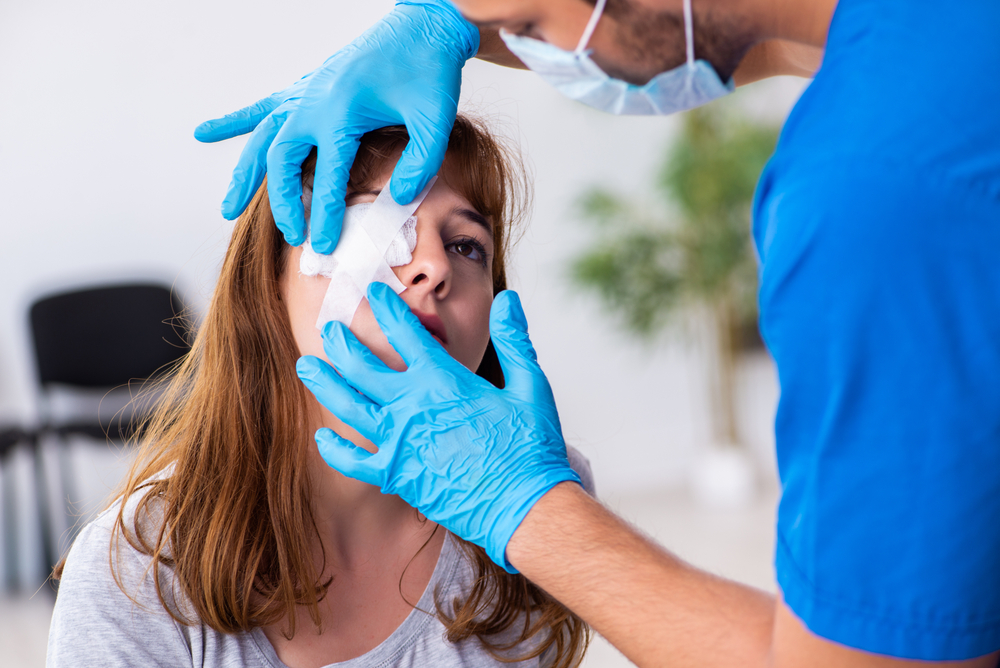
In your daily life, you might encounter situations that pose a risk to your eye health, from splashes of household cleaners to unexpected pokes and prods. Being informed about these potential dangers can help you avoid unnecessary risks. However, when accidents do happen, knowing the steps to take can be lifesaving for your vision.
Recognizing an Eye Emergency
Recognizing an eye emergency is the first step in providing the appropriate response. Symptoms of an eye emergency can include severe pain, sudden loss of vision, a visible wound on the eye or eyelid, an unusual change in pupil size or shape, the appearance of blood in the white part of the eye, or the sensation of something being stuck in the eye. If you experience any of these symptoms, it's crucial to take immediate action.
Sometimes, it's not the symptoms but the context that indicates an emergency. Events like getting hit in the eye with a fast-moving object, exposure to chemicals, or a sudden increase in floaters or flashes of light could all signal the need for urgent care. Additionally, if you wear contact lenses and experience redness, pain, or a discharge, this could also be a sign of an eye emergency, particularly if these symptoms occur suddenly.
What to Do for a Chemical Burn
One of the most harrowing eye emergencies you could encounter is a chemical burn. This can occur when a hazardous substance comes into contact with your eye, causing immediate pain, redness, blurred vision, and even the potential for severe injury.
Firstly, if you're wearing contact lenses, remove them immediately to prevent further irritation or damage. Next, you need to rinse your eye with clean, lukewarm water for at least 15 minutes.
While rinsing, try to keep your eyelids open as much as possible to allow the water to cleanse the entire surface of your eye. Do not rub your eye, as this can cause additional damage. Once you've completed the rinsing process, seek medical attention immediately, even if the symptoms seem to subside. Chemical substances can have a prolonged effect, and only a professional can assess the extent of the burn and prescribe the necessary treatment.
How to Navigate Pink Eye
Pink eye, also known as conjunctivitis, is an inflammation or infection of the conjunctiva, the transparent membrane that lines your eyelid and covers the white part of your eyeball. While pink eye can be irritating, it's not always an emergency. However, if you have severe pain, vision loss, intense redness, or sensitivity to light, you should treat it as an urgent condition.
To manage pink eye at home, start by applying a cold or warm compress to your eyes to alleviate discomfort. Use a clean, soft cloth each time to prevent spreading the infection. Avoid wearing contact lenses or makeup until your symptoms have completely resolved.
If your pink eye is accompanied by more severe symptoms or if it persists despite home care, it's time to seek professional advice. An optometrist can determine whether your pink eye is caused by bacteria, a virus, or an allergen and can prescribe the appropriate treatment, such as antibiotic eye drops for a bacterial infection.
How to Handle Blunt Force Trauma to the Eye
Encountering a blunt force trauma to the eye can be both painful and alarming. This type of injury can result from being hit by a ball, a fist, or even walking into a hard object. The impact can lead to a black eye, bleeding, or more severe internal damage, such as a detached retina or orbital fracture.
The foremost step in addressing blunt force trauma is to gently apply a cold compress to the affected area to reduce swelling and pain. Do not apply pressure directly to the eye, and do not use a steak or raw meat as a compress, as often depicted in movies; this can introduce bacteria and cause infection.
If your vision changes, the pain escalates, or you notice any blood in the white or colored parts of your eye, you must seek medical attention immediately. Do not attempt to self-treat serious injuries or assume they will heal on their own. An optometrist can assess the damage and provide the necessary care, potentially saving your vision.
Safeguarding Your Vision and Eye Health
Eye emergencies can strike unexpectedly and can be distressing, but with the right knowledge and response, you can safeguard your vision. Remember to stay calm and act swiftly when faced with a chemical burn, pink eye, blunt force trauma, or a foreign object in the eye. Your ability to recognize the signs of an eye emergency and take appropriate action is essential.
In the event of an eye emergency or if you are concerned about your eye health, contact our professionals at Savaglio Family Vision in our Kenosha, Wisconsin, office. Call 262-657-7850 to schedule an appointment today.







